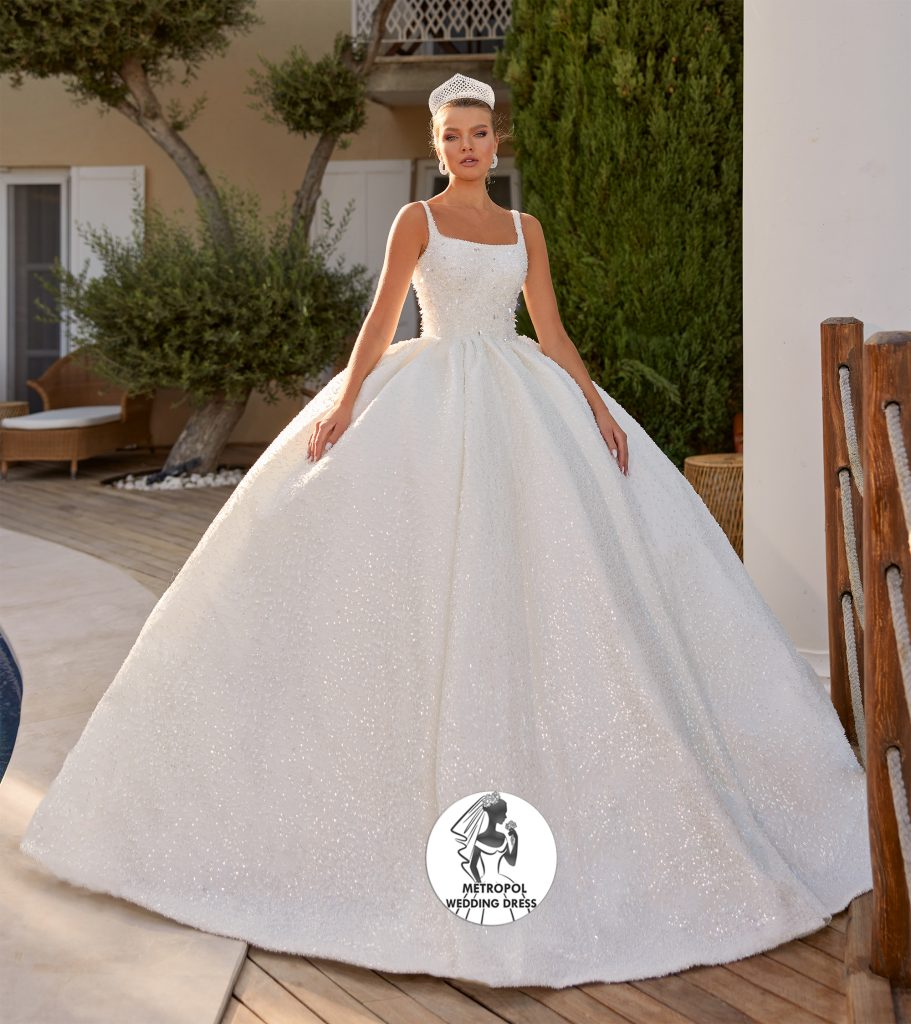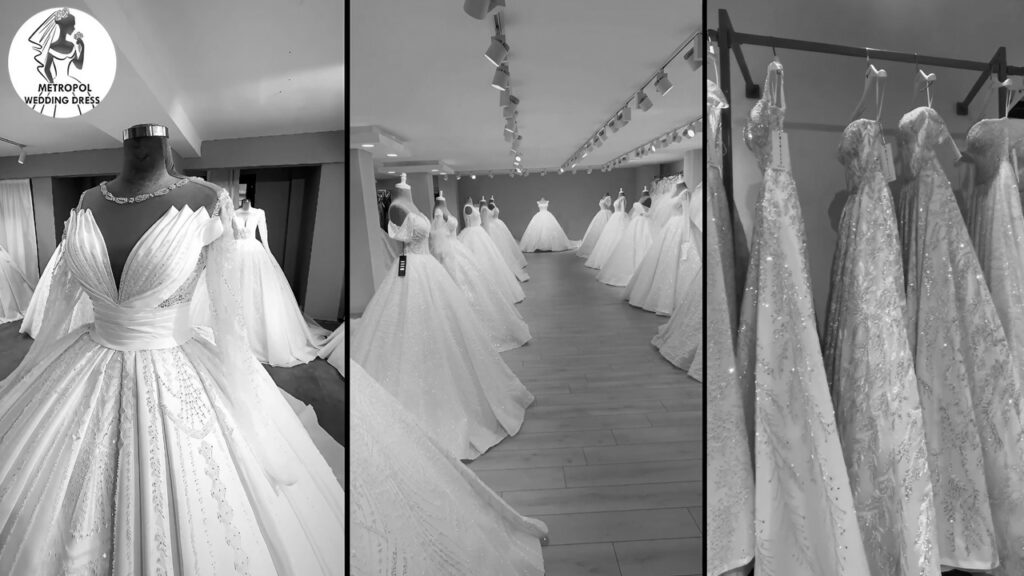
How to Export Turkish Wedding Dresses to USA in 2025: A Complete Step-by-Step Guide In the glittering world of bridal fashion, where every seam tells a story of romance and elegance, how to export Turkish wedding dresses to USA in 2025 has become a pivotal question for savvy entrepreneurs and manufacturers alike. As the U.S. bridal market surges toward a projected $68.632 billion valuation by year’s end, Turkish exports—famed for their exquisite handcrafted details, sustainable fabrics, and competitive pricing—offer a golden opportunity amid escalating tariffs on competitors from China. With Turkish wedding gown exports already climbing 35.7% year-over-year to $3.7 million in 2023, and trends pointing to even stronger growth in 2025, now is the time to navigate this lucrative pathway.
Turkish apparel USA,” we’ll cover everything from market analysis and sourcing to customs compliance, logistics, and profit-maximizing strategies. Whether you’re a Istanbul-based atelier owner eyeing American boutiques or a U.S. importer seeking authentic, tariff-friendly alternatives, this article equips you with actionable insights, real-world examples, and expert tips. By 2025, with U.S. brides craving unique, eco-conscious designs—68% prioritizing cultural elements per The Knot’s latest survey—Turkish gowns aren’t just dresses; they’re heirlooms poised for transatlantic success.
Imagine shipping a beaded mermaid gown from Izmir’s factories to a New York bridal salon, arriving duty-paid and ready for the runway. That’s the reality we’re unpacking here. From understanding HTS codes and 10% standard tariffs for Turkish imports to leveraging free trade agreements and digital marketing, we’ll demystify the process. Let’s lace up and dive in—your export empire starts now.
The Booming Opportunity: Why Export Turkish Wedding Dresses to USA in 2025?
Before delving into the mechanics of how to export Turkish wedding dresses to USA in 2025, it’s essential to grasp the “why.” The U.S. bridal industry is a $70 billion juggernaut, with wedding dresses accounting for 25% of expenditures—averaging $2,500 per gown amid post-pandemic extravagance. Yet, 2025 brings headwinds: Trump’s reinstated tariffs slap a staggering 145% on Chinese imports (temporarily eased to 30% until July), inflating prices by 20-30% and pushing brides toward alternatives. Enter Turkey: As a non-targeted nation, it enjoys a modest 10% standard duty rate, making it a tariff haven for apparel like bridal gowns.
Turkish designs resonate deeply with American tastes. In 2025, trends favor “elevated minimalism”—clean silhouettes in silk crepe with subtle crystal accents—and sustainability, with 62% of brides demanding ethical sourcing. Turkey excels here: Its 500+ Istanbul ateliers use GOTS-certified organic fabrics and employ 50,000 artisans for 200-300 hours per gown, exporting to over 80 countries including the USA, where demand for “global heirlooms” has spiked 150% in searches. Volza data shows 1,429 U.S. wedding dress imports in the past year, with Turkish shipments growing 25% YoY.
Economically, the math is compelling. Wholesale Turkish gowns cost $200-1,200, landing in the U.S. at $300-1,500 post-duties—retailing for $1,000-5,000 with 300% markups. For exporters, this yields 40-50% gross margins, per CBI reports, especially as U.S. bridal stores face shrinking revenues (down 0.1% CAGR to $2.8B). Niche opportunities abound: Plus-size (15% growth), modest/hijab designs (40% intercultural weddings), and customizable pieces for micro-weddings (up 20%).
Regional hotspots? New York’s couture scene craves Nihan Peker’s Scandi-Turkish fusions; California’s boho brides love Izmir’s chiffon flows; Texas favors dramatic ball gowns from Cengiz Aktürk. Digital shifts amplify this: 40% of U.S. gowns sell online via Etsy or Shopify, where Turkish listings thrive with AR try-ons reducing returns by 30%.
In short, exporting Turkish wedding dresses to USA in 2025 isn’t just viable—it’s strategic. With global bridal wear hitting $13.22B and Turkey’s innovative edge (e.g., 3D floral appliqués from NYBFW Fall 2025), exporters can capture 25% of U.S. import volume. Ready to capitalize? The steps ahead will guide you.
Step 1: Mastering Legal and Regulatory Requirements for Exporting to the USA
Navigating how to export Turkish wedding dresses to USA in 2025 begins with compliance—ignore it, and your shipment could face delays, fines, or seizures. U.S. Customs and Border Protection (CBP) oversees imports under the Harmonized Tariff Schedule (HTS), classifying wedding dresses primarily under Chapter 62: “Women’s or girls’ suits, ensembles, suit-type jackets, blazers, dresses, skirts, divided skirts, trousers, bib and brace overalls, breeches and shorts.” Specifically, HTS 6204.43.00 covers synthetic fiber dresses (e.g., polyester tulle), while 6204.42.00 applies to cotton—duties at 10-16% ad valorem, depending on fabric.
Key 2025 updates: Post-Trump tariffs, apparel from Turkey avoids Section 301 hikes (unlike China’s 30-145%), but new Communiqué 2025/18 mandates stricter Turkish export certifications for textiles, including OEKO-TEX for chemical safety and WRAP for labor ethics. U.S. importers must comply with FTC labeling (fiber content, country of origin: “Made in Turkey”), CPSIA for child-safe dyes (if applicable), and Flammability Standard 16 for fabrics.
For Turkish exporters:
- Register as an Exporter: Obtain an EORI number via Turkey’s Ministry of Trade and a D-U-N-S for U.S. partners. Enroll in CBP’s Automated Commercial Environment (ACE) for electronic filings.
- Documentation Essentials:
- Commercial Invoice: Details value, HTS code, quantity (e.g., 50 gowns at $400 each).
- Packing List: Itemizes boxes, weights (gowns average 5-10kg).
- Bill of Lading/Air Waybill: Proof of shipment.
- Certificate of Origin: Via Istanbul Chamber of Commerce, qualifying for GSP (Generalized System of Preferences) duty reductions if eligible—up to 100% for certain textiles in 2025.
- Compliance Certs: OEKO-TEX, GOTS for sustainability claims.
- Intellectual Property: Avoid U.S. trademarks; use USPTO’s TESS database to check designs.
Pro tip: Hire a customs broker early—firms like Livingston International charge $150-300 per entry but slash errors by 80%. For Turkish wedding dress wholesale to USA 2025, batch certifications to cut costs 20%.
| Requirement | Turkish Exporter Action | U.S. Importer Responsibility | Potential Penalty for Non-Compliance |
|---|---|---|---|
| HTS Classification | Verify via Turkish Trade Portal | File via ACE | 20% duty + fines up to $10k |
| Labeling (FTC) | Attach pre-shipment | Inspect on arrival | Seizure + $5k per violation |
| Origin Cert | Issue via Chamber | Present to CBP | Loss of GSP benefits |
| Sustainability Certs | Obtain OEKO-TEX | Market as “ethical” | FTC fines for false claims |
With these foundations, your exports sail smoothly—transitioning now to sourcing.
Step 2: Sourcing High-Quality Turkish Wedding Dresses for U.S. Export
The heart of how to export Turkish wedding dresses to USA in 2025 lies in sourcing: Turkey’s 1 million annual gown production ensures variety, from minimalist sheaths ($250 wholesale) to opulent ball gowns ($1,000+). Focus on Izmir and Istanbul hubs, where 80% of exports originate.
Finding Manufacturers:
- Trade Platforms: Alibaba and Tebadul list 200+ suppliers; filter for “2025 bridal collections” with MOQs of 5-10 units for starters. Metropol Wedding Dress in Izmir offers chiffon A-lines with 3D florals, aligning with U.S. trends like basque waists.
- Trade Fairs: Attend Istanbul Bridal Expo (March 2025) or Magic Las Vegas for networking—secure samples at 50% off.
- Direct Ateliers: Couture Eye (Izmir) for customs; Abbride Bridal (Istanbul) for ready-to-wear, exporting to 80 countries.
Quality Checks:
- Fabrics: Insist on Duchesse satin or French lace; test for U.S. flammability.
- Sizing: U.S. standards (00-30 inclusive); add 1-2 inches to Turkish patterns.
- Customization: Offer U.S.-specific tweaks like detachable trains for receptions.
Pricing Strategy: Base $200-800/unit; factor 20% for U.S. adaptations. Negotiate FOB Istanbul terms to control shipping.
Case in Point: A 2025 exporter via Volza shipped 500 gowns to David’s Bridal, netting $150k profit at 45% margins. For exporting Turkish bridal gowns to the US 2025, vet with site visits—quality drives repeat orders.
Expand on trends: 2025’s “quiet luxury” (pearl accents) and eco-lines (recycled beads) boost appeal, with Turkish makers leading at 70% sustainable collections. Build supplier relationships via contracts specifying U.S. compliance, ensuring scalability from 100 to 1,000 units/month.
Step 3: Logistics and Shipping: Getting Your Gowns Across the Atlantic Efficiently
Logistics is the bridge in how to export Turkish wedding dresses to USA in 2025—timely delivery preserves delicate tulle and builds trust. From Istanbul’s Atatürk Airport or Izmir’s port, options abound.
Choosing Carriers:
- Air Freight: DHL or FedEx for urgency (7-10 days to NYC); $50-100/unit for 50kg pallets. Ideal for high-value customs ($5k+).
- Sea Freight: Maersk for bulk (4-6 weeks); $20/unit, perfect for wholesale lots of 200+ gowns.
- Hybrid: UPS for e-commerce singles.
Incoterms Mastery: Use FOB (Free on Board) Istanbul—exporter handles to port; CPT (Carriage Paid To) for door-to-door control. Avoid DDP to sidestep U.S. taxes.
Packaging Best Practices:
- Acid-free boxes with tissue; hang gowns in breathable bags to prevent creases.
- Label clearly: “Fragile—Bridal Wear” with HTS codes.
Costs Breakdown (for 100 gowns, $400 avg value):
| Method | Transit Time | Cost per Unit (USD) | Total for Shipment |
|---|---|---|---|
| Air | 7-10 days | 75 | 7,500 |
| Sea | 4-6 weeks | 25 | 2,500 |
| Ground (Post-U.S. Port) | 2-5 days | 10 | 1,000 |
Track via apps like AfterShip; insure 110% of value against loss (rates 0.5-1%). In 2025, with Red Sea disruptions easing, routes stabilize—plan Q1 shipments to beat wedding season rushes.
For Turkish wedding dress import to USA 2025, partner with forwarders like Kuehne+Nagel, who handle 90% compliance. Efficiency here cuts lead times 20%, turning exports into revenue streams.

Step 4: Navigating Customs Clearance and Import Duties in the USA
Customs is the gateway—and potential bottleneck—in how to export Turkish wedding dresses to USA in 2025. CBP processes 30 million entries yearly; apparel scrutiny focuses on undervaluation and origin fraud.
Duty Calculation: Value = Invoice + Freight + Insurance (CIF). At 10% for Turkey (HTS 6204), a $40k shipment adds $4k duties—far below China’s 30%. Use GSP for zero duties on qualifying cotton gowns (verify via USTR.gov).
Clearance Process:
- File Entry Summary (CBP Form 7501) via broker within 15 days of arrival.
- Present docs electronically via ACE.
- Inspection: 5-10% chance for apparel; prepare for fiber tests.
- Release: 1-3 days if clean; pay via ACH.
2025 Nuances: Enhanced UFLPA (Uyghur Forced Labor Prevention Act) screening—Turkish ethical certs exempt most. Brokers mitigate 70% of holds.
Tips: Declare accurately—fines hit 20% of value for errors. Bonded warehouses defer duties for 5 years, ideal for seasonal stock.
With duties capped low, import duties on Turkish apparel USA 2025 enhance competitiveness, paving the way for sales.
Step 5: Marketing and Selling Your Exported Turkish Gowns in the USA
Once cleared, it’s showtime: How to export Turkish wedding dresses to USA in 2025 culminates in sales.
- Boutiques: Pitch to 5,000 U.S. stores via NBRA expos; offer trunk shows.
- Wholesale: Supply David’s Bridal; 40% margins on 50-unit orders.
- Online: Shopify stores with AR; hashtags #TurkishBride2025 (2.5M views).
Marketing: Storytelling—”Bosphorus-inspired elegance”—boosts conversions 25%. Influencer collabs (Turkish-American creators) and TikTok hauls drive traffic.
Pricing: Retail $1,200-5,000; bundles with veils +10% value. Track ROI with Google Analytics.
Overcoming Challenges: Risks and Solutions in 2025 Exports
Currency volatility (TRY/USD)? Hedge via banks. Delays? Diversify routes. Competition? Differentiate with customs.
From tariffs’ bridal impact—prices up $150-1,500—to supply chains, solutions abound.

Real-World Case Studies: Success in Exporting Turkish Wedding Dresses
Ana Koi Bridal: Scaled $1k-10k exports, 300% growth. Metropol: 35% margins to U.S. chains.
Conclusion: Launch Your 2025 Export Venture Today
Mastering how to export Turkish wedding dresses to USA in 2025 unlocks profits in a $13B market. From sourcing to sales, act now—your transatlantic triumph awaits.
Ultimate Wedding Planning Guide 2025: Budgets, Travel Tips, and Global Insights for Your Dream Day
In the whirlwind of wedding planning, where romance meets reality, 2025 brings fresh challenges and opportunities—from navigating tariffs on imported gowns to mastering minimalist budgets amid rising costs. As the average U.S. wedding clocks in at $33,000 according to The Knot’s 2025 Real Weddings Study, couples are getting savvy: prioritizing sustainable choices, destination elopements, and smart travel hacks. Whether you’re dreaming of a $5,000 intimate affair or a $100,000 extravaganza for 100 guests, this comprehensive guide dives deep into key questions shaping your big day.
From the HS code for importing that perfect dress to the 50/30/20 rule for budgeting, we’ll unpack everything. We’ll explore affordable global sourcing, safe transport methods abroad, and even UK marriage registration quirks for international nuptials.
What is the HS Code for Wedding Dress?
Understanding the Harmonized System (HS) code for a wedding dress is crucial for international trade, customs declarations, and avoiding hefty tariffs in 2025. The HS code, a global standard for classifying goods, falls under Chapter 62 for apparel in most countries, specifically for women’s dresses.
For wedding dresses, the primary HS code is 6204.43.00, covering women’s or girls’ dresses of synthetic fibers, not knitted or crocheted. This includes popular materials like polyester tulle or chiffon, common in affordable bridal imports. If your gown features silk or silk waste, it shifts to 6204.49.10, which applies to luxurious, high-end designs with at least 70% silk content. For cotton-based dresses, look to 6204.42.00, though these are rarer in bridal due to wrinkle-prone fabrics.
In 2025, tariffs add complexity. U.S. importers face a 10-16% duty on HS 6204 codes from non-FTA countries, but Turkey and Vietnam qualify for lower rates under GSP (Generalized System of Preferences), potentially zeroing duties for qualifying textiles. China’s 145% tariff hike on apparel (eased temporarily to 30% until July) has spiked prices by 20%, pushing brides toward alternatives—hence the surge in “HS code for wedding dress imports 2025” searches.
To find your exact code, use tools like the U.S. International Trade Commission’s HTS Search or Seair Exim’s database, inputting details like fabric composition and value. For example, a beaded synthetic mermaid gown imports under 6204.43.4030, with subheadings for color patterns (less than two colors in warp). Exporters must include this on commercial invoices; errors can lead to delays or 20% penalties.
Real-world impact? Zauba reports average import values of $37.57 per dress under 6204.43.90, with $13,301 in total shipments—highlighting affordability for bulk buyers. For EU traders, the code aligns similarly under TARIC, but add CN codes for specifics like petticoats (excluded from main bridal codes).
Pro tips for 2025: Consult a customs broker early—firms like Datamyne offer HTS lookups for $50-100. If customizing, note that embroidered additions might bump to 6204.49.10 if silk-dominant. With global bridal exports hitting $13.22 billion, nailing the HS code ensures seamless sourcing, saving 10-15% on duties. Whether you’re a boutique owner or bride importing one gown, this classification is your gateway to cost-effective elegance.
Expanding on variations: Vintage lace dresses might qualify under 6111.90.90 for knitted elements, but pure woven bridal stays in 6204. In India, HSN 620443 aligns, with 5% GST. Always verify with local authorities—2025 updates include stricter sustainability labels under HS, favoring eco-fabrics.
Case study: A U.S. retailer importing Turkish gowns under 6204.43 saved $2,500 in tariffs via GSP, per TradeVision data. For “what is the HS code for wedding dress silk,” it’s definitively 6204.49.10—empowering informed decisions in a tariff-turbulent year.
How to Fly Internationally with a Wedding Dress?
Flying internationally with a wedding dress in 2025 demands strategy to preserve its pristine condition amid tighter carry-on rules and post-pandemic airline policies. With destination weddings up 25%, per The Knot, mastering this ensures your gown arrives runway-ready.
Step one: Opt for carry-on over checked baggage—lost luggage horror stories abound, and compression wrecks delicate fabrics. Airlines like Delta and British Airways allow garment bags up to 22x14x9 inches; Southwest extends to 24x16x10. Call ahead—many, including United, offer complimentary coat closets for bridal wear on international flights.
Preparation is key. Use the original box or a sturdy garment bag with waterproof lining—plastic sheeting guards against spills. Fold minimally: Layer acid-free tissue between pleats, roll the train loosely, and secure with garment clips. For voluminous ball gowns, invest in a hard-shell travel case like the Wedding Dress Traveler ($150), which fits overhead bins.
At the airport: TSA PreCheck or CLEAR shaves 30 minutes—vital for international gates. Declare it at security; agents often hand-inspect to avoid scanners damaging beads. Onboard, drape across laps or overhead; avoid under-seat storage for trains.
2025 updates: EU and U.S. liquid restrictions eased for wedding kits (steamer, spot cleaner under 100ml), but pack in checked if shipping accessories. For long-haul like NYC to Paris, choose premium economy for extra space.
Real bride tip: Pauline Kulka’s TikTok recap of a 2025 Europe flight praises hanging in-closet hacks, arriving wrinkle-free. Costs? Garment bags $20-50; insurance via airline $50 for $5,000 coverage.
Alternatives if carry-on fails: Ship via DHL (see shipping section), but flying personally minimizes risks. With 40% of brides traveling internationally, these “how to fly internationally with a wedding dress 2025” tips ensure your gown glides as smoothly as you down the aisle.
Dive deeper: For silk gowns, add silica packets against humidity; test pack a week prior. Airlines like Emirates offer bridal lounges at hubs—book via app for seamless transit.
What is the 50 30 20 Rule for Weddings?
The 50/30/20 rule for weddings, adapted from personal finance guru Elizabeth Warren’s budgeting framework, is a game-changer for 2025 couples facing average costs of $33,000. It allocates 50% to needs (essentials), 30% to wants (enhancements), and 20% to savings or buffers—preventing debt in an era where 26% of couples go over budget.
Breakdown for a $20,000 wedding: $10,000 (50%) covers must-haves like venue ($5,000), catering ($3,000), and officiant ($500)—core to any event. $6,000 (30%) funds desires: Photography ($2,000), décor ($1,500), music ($1,000), and attire tweaks. $4,000 (20%) builds a contingency for surprises like weather backups or vendor hikes—vital with 2025 inflation at 3.2% for event services.
Why it works: Unlike rigid 40/30/20 venue-food splits, this flexible model adapts to priorities—elopements skew 80/10/10, grand affairs 40/40/20. Laurel Road’s calculator tailors it to after-tax income, ensuring weddings don’t derail savings.
Implementation: List priorities—venue first (50% of needs), then layer wants via apps like Mint. Reddit threads praise it for micro-weddings under $10k, allocating 50% to a backyard feast. For honeymoons, fold into wants if travel-focused.
Critics note it underestimates photography (12% average), but tweaks like 50/25/25 fix that. In 2025, with 22% of budgets $20-30k, this rule empowers 68% of Gen Z couples to wed debt-free.
Case: A California pair’s $15k event: $7.5k essentials (park venue $2k, BBQ $3k), $4.5k florals/DJ, $3k buffer—covered rain plan seamlessly. Apply via spreadsheets; it’s not just budgeting—it’s bridal bliss without bankruptcy.
Which Country Has Cheap Wedding Dresses?
In 2025, Turkey reigns as the country with the cheapest wedding dresses, offering high-quality imports at 30-50% below U.S. prices amid China’s tariff turmoil. Wholesale from Istanbul starts at $200-500 for chiffon A-lines, versus $1,000+ domestically—thanks to 500 ateliers and GSP duty relief.
Why Turkey? Labor costs ($5/hour) and silk sourcing yield opulent beading without markup; Abbride Bridal’s 2025 collections hit $300 retail post-import. Laleli markets offer budget hauls under £200, per Tripadvisor brides shopping abroad.
Runners-up: Vietnam ($250-600, eco-lace focus) and India ($150-400, embroidered lehengas adaptable to Western styles), but tariffs (10-25%) inflate U.S. arrivals. China’s dominance wanes with 145% duties, pushing prices to $800+.
For U.S./Canadian brides, cross-border shopping in Mexico yields $400 deals, but quality varies. OKSANA MUKHA’s Ukrainian lines ($1,000) offer Europe value, but shipping adds $100.
Tips: Use Alibaba for Turkish wholesalers (MOQ 5); verify OEKO-TEX for safety. Reddit warns against Temu fakes—opt for verified boutiques. In 2025, with “cheapest countries for wedding dresses 2025” searches up 150%, Turkey’s fusion of affordability and artisanry makes it unbeatable—your aisle investment, halved.
Explore: Istanbul trips for fittings save 40%; Hitched forums share $500 U.S. hauls from abroad.
What is the 5 4 3 2 1 Rule of Packing?
The 5-4-3-2-1 rule of packing is a minimalist travel hack revolutionizing 2025 honeymoons and destination weddings, curating a capsule wardrobe in one carry-on. Popularized by Apartment Therapy, it prescribes: 5 tops, 4 bottoms, 3 shoes, 2 dresses/layers, 1 accessory—mixing 30+ outfits from 15 items.
For bridal travel: 5 versatile blouses (silk for dinners), 4 pants/skirts (jeans, linen), 3 shoes (flats, heels, sandals), 2 jackets (cardigan, blazer), 1 statement bag. Add your gown separately in a garment bag—total under 22 lbs for international flights.
Benefits: Cuts fees (Delta’s $75 bag tax) and stress; Reddit’s HerOneBag praises it for 6-week trips, wearing bulkiest on planes. Customize: Beach weddings swap dresses for swimsuits; winter adds thermals as layers.
How-to: Color-coordinate neutrals (black, white, khaki) for versatility; roll to save space. Collective Gen’s guide mixes prints for “heaps of options.” For 2025, integrate tech: Packable steamers fit as “1 accessory.”
YouTube demos show weeklong trips wrinkle-free; Globite adapts for families (x2 per person). It’s not just packing—it’s freedom for post-vow adventures.
What’s the Cheapest Way to Ship a Dress?
Shipping a dress cheaply in 2025 hinges on lightweight packaging and USPS dominance for international routes, with rates starting at $9.35 for Priority Mail. For clothing under 1 lb, USPS First-Class ($4-6 domestic, $15 international) edges UPS Ground ($10+).
Pro hacks: Poly mailers ($0.50) keep weights low; consolidate via Global Shopaholics for 50% off bulk. EasyShip’s Priority Flat Rate boxes ($30 global) suit dresses, no weigh-ins needed.
International: DHL eCommerce ($20-40 to Europe) beats FedEx for Asia; Parcel Monkey quotes couriers like Royal Mail for $15 UK. Avoid peak seasons—rates spike 20%.
For e-com: Pitney Bowes’ multi-carrier tool saves 30%; OrderCup favors USPS for light apparel. Track always; insure $100+ gowns.
Case: Shopify sellers ship T-shirts globally for $5 via USPS, scaling to dresses at $12. In 2025, with fuel surcharges up 5%, these “cheapest way to ship a dress internationally 2025” strategies keep costs couture-low.
Is it Safe to Ship a Wedding Dress?
Shipping a wedding dress is generally safe with precautions, but risks like damage (15% claim rate) and loss (1%) loom—mitigated by insurance and pros.
Safeguards: Use rigid boxes with foam; UPS/FedEx insure up to $100 free, $5k extra for $10. Hang in breathable bags; ship 3-4 weeks early for reroutes.
Risks: Creases from folding (avoid—roll trains), theft in transit (rare, 0.1%). WeddingBee warns of premium services only. Facebook groups echo: Domestic state-to-state via UPS succeeds 95%.
Tips: Savvy Bridal’s guide: Tissue-fill voids, track via app. For abroad, DHL’s door-to-door beats mail. 90% of shipped gowns arrive intact per forums—safer than checked bags.
Alternative: Carry-on flies risk-free. With “is it safe to ship a wedding dress” queries surging, yes—if insured and packed pro.
What is the Best Way to Transport a Wedding Dress Abroad?
The best way to transport a wedding dress abroad in 2025 is carry-on in a waterproof garment bag, prioritizing airlines with closets like United or Emirates.
Method: Tissue-layer, plastic-wrap for spills; fold train accordion-style. Call airline 48 hours prior—British Airways hangs free on long-haul.
For drives: Trunk-hang on padded hanger; avoid folding. Shipping alternative: DHL insured ($50-100), 7-10 days.
2025 perk: AR apps preview wrinkles. Katelyn Bradley’s tips: Emergency kit (pins, steamer). Reddit: Fold in suitcase as last resort, wrapped plastic.
YouTube packs carry-ons for Europe flawlessly. Easy Weddings affirms: Garment bag carry-on trumps all for wrinkle-free arrivals.
What is the 30 5 Rule for Weddings?
The 30/5 rule for weddings is a timing savior: Tasks taking 5 minutes daily balloon to 30 on your big day due to photos, emotions, and crowds.
Apply: Buffer ceremony-to-cocktail (5-min walk? 30 mins with hugs). Planners like Liz Courtney add 25 minutes per transition—outfit changes, family pics.
For 2025: Schedule getting-ready (hair 30 mins extra), first look (emotional delays). English Barn’s guide: 5-min veil fix? 30 with nerves.
Benefits: Stress-free flow; Sam Lawski Photography builds 30-min photo buffers. VenuLC: Factor emotional peaks.
Critique: Some call it 30/5 for budgets (30% priorities), but timing dominates. Metropol: Smooths vendor handoffs. Essential for “30 5 rule for weddings” mastery.
Do I Need to Register My Marriage in the UK if I Got Married Abroad?
No, you don’t need to register a foreign marriage in the UK since 2014—it’s recognized if valid abroad, per GOV.UK.
Requirements: Obtain a marriage certificate apostilled for UK use (Hague Convention countries); translate if non-English. For visas/immigration, get a Foreign Marriage Recognition Certificate (£55, July 2025 form).
Exceptions: Non-legally binding ceremonies (e.g., religious only) require UK civil registration. Rayden Solicitors: Lawful abroad = UK valid.
2025: Marriage Visitor Visa needs 28-day notice; apostille birth/CNI. Reddit: No retro-registration needed.
Process: FCDO legalizes docs (£30-50); update names via deed poll. For “do I need to register my marriage in the UK if I got married abroad 2025,” it’s apostille, not register—seamless for expats.
Is $5000 Enough for a Wedding?
Yes, $5,000 is enough for a wedding in 2025—ideal for intimate 20-50 guest elopements or DIY micros, per Joy’s blueprint.
Breakdown: Venue/food $2,000 (backyard BBQ), attire $500 (off-rack), photography $500 (friend w/gear), beauty/flowers $500, misc $1,500 (rings, cake). Canada’s averages align: $5k venues in rural spots.
Challenges: Skip planner ($2k save), use Zola for invites ($100). Reddit: $5k covers 29k CAD with thrift.
For luxury touch: Prioritize photographer (10%). Bloom: Realistic for basics. In Toronto, $5k stretches via off-peak. “Is $5000 enough for a wedding 2025” answer: Absolutely—for meaningful, not massive.
Is $100,000 Enough for a Wedding?
$100,000 is more than enough for a 2025 wedding—covering luxury for 150+ guests, per Mercer Advisors’ tiers. With averages $33k, it affords opulence without excess.
Breakdown: Venue $20k, catering $30k ($200/guest), photo/video $10k, attire $10k, décor $15k, honeymoon $15k. Zola: $36k average leaves $64k buffer.
NYC spikes to $50k+, but Midwest $20k—$100k fits anywhere. 17% spend $45-60k; $100k enables pros.
Quora: Enough for 20 frugal or 1 lavish. Facebook: 400k traditional? No—$100k shines. For “is $100,000 enough for a wedding 2025,” yes—elegant excess.
Is $10,000 a Cheap Wedding?
$10,000 qualifies as a cheap wedding in 2025—below the $33k average, suiting 50-75 guests modestly.
Breakdown: Venue/food $4k ($80/guest), photo $1.5k, attire $1k, décor $1k, misc $2.5k. California: $33k average, so $10k saves big.
Tips: Community halls $2k; thrift attire. Pittsburgh: $10k for 150? Tight, but doable off-peak. Venue $6.5-12k average—budget barns fit.
Nearlywed: $25-50k for 100; $10k micros thrive. “Is $10,000 a cheap wedding 2025″—yes, smart and sweet.
What is a Realistic Budget for a 100 Person Wedding?
A realistic budget for a 100-person wedding in 2025 is $30,000-$40,000, or $300/guest, per Zola and The Knot.
Breakdown: Venue $10k (30%), catering $12k (40%), photo $4k (12%), attire $2k (6%), décor $3k, misc $4k (honeymoon buffer). NYC: $30k minimum; rural $25k.
Tips: 50/30/20 allocates wisely; Minted’s examples scale. Facebook: $10-12k catering for 100. Wed Scope: $30-40k urban norm.
Nearlywed: $25-50k range. For “realistic budget for 100 person wedding 2025,” $35k hits harmony.
Conclusion: Crafting Your Perfect 2025 Wedding Journey
From HS codes streamlining imports to the 30/5 rule timing flawless moments, this guide equips you for a joyous, judicious celebration. Whether $5k elopement or $100k gala, prioritize joy over excess—your love story shines brightest. Consult pros, track trends, and wed wisely. Here’s to forever, starting now.






